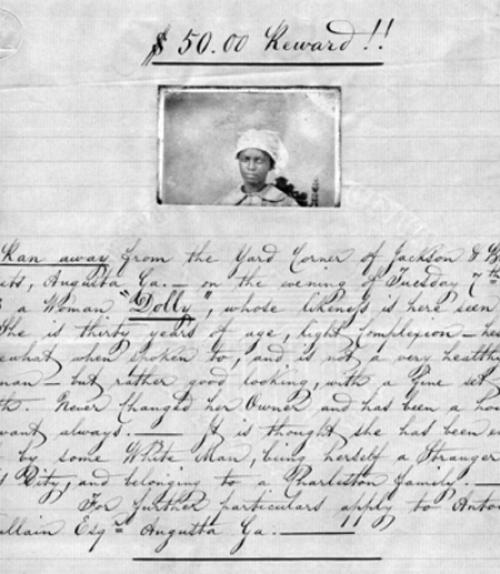Runaway slave advertisements – a common sight in North American newspapers in the 18th and 19th centuries – are frankly disturbing. They describe people as property, listing their physical attributes and family connections in chilling terms.
Yet the roughly 100,000 runaway slave advertisements also contain a wealth of information. They offer clues about the heartbreaking personal stories of those who were enslaved and sought their freedom. Taken together, they illuminate the sweep and scope of slavery and its tremendous human cost.
A unique interactive project in development at Cornell seeks to tell that entire story. The project, “Freedom on the Move” (FOTM), aims to compile all North American runaway slave advertisements, never before systematically collected, into a collaborative database of information. The project will include new tools allowing partner institutions to add their own archives, opening up unprecedented ways to engage a large online community and to study this traumatic but critical period in U.S. history.
Freedom on the Move workshop
On May 13, Cornell will host a workshop introducing the project to potential partners at colleges and libraries. The workshop will demonstrate how participants might create and contribute a collection of advertisements. It will provide instruction and exploration of basic statistical modeling and data visualization tools, demonstrating some of FOTM’s research possibilities. To register, click here.
“When students or others do the work it takes to get one of these ads recorded and analyzed, they become part of a bigger community dedicated to preserving the fugitive traces left on history by people who refused to let slavery contain them,” said Edward E. Baptist, professor of history in the College of Arts and Sciences. “This project awakens website users to the gritty reality of slavery. But it also makes them feel like they are doing something, however small, to chip away at slavery’s glacial legacy.”
A joint venture launched by Baptist, Cornell University Library and the Cornell Institute for Social and Economic Research (CISER), FOTM will integrate existing runaway slave advertisement projects, and allow archivists and researchers nationwide to add advertisements and search terms. Some of the data collection will be crowdsourced, creating a community of collaborators and producing a living educational tool for instructors at all levels, in multiple disciplines.
The ads include detailed information about slaves’ appearance, mannerisms, styles of dress, states of origin and destinations, and once completed, FOTM will offer this data for statistical, geographical, textual and other analysis. It will also provide insight into the powerful human stories of each individual’s experience of American slavery, illustrating both large-scale statistical trends and personal histories.
FOTM began with Baptist’s research for his 2014 book, “The Half Has Never Been Told: Slavery and the Making of American Capitalism,” on the expansion of slavery in the U.S. from the Constitution to the Civil War.
Professor Mary N. Mitchell of the University of New Orleans and professor Joshua Rothman of the University of Alabama are key collaborators in the FOTM project, which has been supported jointly by the Cornell Department of History, CISER and Cornell University Library. The current phase is funded by a National Endowment for the Humanities Digital Humanities Start-Up Grant.
This article also appeared in the Cornell Chronicle.





